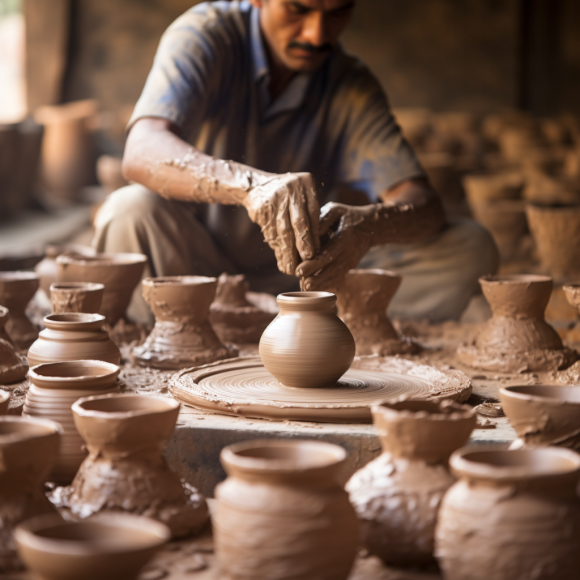T
he process of transforming clay into ceramic involves a crucial step known as firing, where the clay is subjected to high temperatures in a kiln. In this blog post, we will explore kilns and firing techniques, understanding how they play a vital role in the final transformation of clay into durable and beautiful ceramic objects.
- Introduction to Kilns: Kilns are specialized ovens used for firing ceramics. We will discuss the different types of kilns, such as electric, gas, and wood-fired kilns, highlighting their unique characteristics and advantages. Understanding the basic components and operation of a kiln is essential for successful firing.
- Firing Process: The firing process consists of two main stages: bisque firing and glaze firing. We will delve into each stage, discussing their purposes and temperature ranges.
- Bisque Firing: Bisque firing is the initial firing that removes moisture from the clay and converts it into a stable, porous form. This firing typically takes place at lower temperatures, around 1800°F (980°C). Bisque firing prepares the ceramic pieces for glazing in the next stage.
- Glaze Firing: Glaze firing is the second firing where glazes are applied to the bisque-fired ceramics, and the pieces are fired again to achieve the desired surface finish and durability. Glaze firing temperatures can vary depending on the type of glaze used, typically ranging from 2000°F to 2400°F (1100°C to 1300°C).
- Kiln Atmospheres: The atmosphere within the kiln during firing can greatly impact the final outcome of ceramic pieces. We will explore different kiln atmospheres, including oxidation, reduction, and neutral firing environments. Each atmosphere affects the colors, textures, and finishes of the glazes and clay bodies.
- Kiln Loading and Shelf Preparation: Proper kiln loading and shelf preparation are crucial for successful firing. We will discuss techniques for arranging ceramic pieces within the kiln, considering factors such as size, shape, and heat distribution. Additionally, we will explore shelf preparation methods, including the use of kiln washes and stilts to prevent pieces from sticking or warping during firing.
- Firing Schedule: A well-planned firing schedule is essential for achieving the desired results in ceramic firing. We will discuss considerations such as heating and cooling rates, temperature holds, and ramping programs. Understanding the firing schedule allows for control over the clay and glaze transformations during firing.
- Raku Firing: Raku firing is a unique and exciting firing technique known for its rapid firing and post-firing reduction. We will explore the process of raku firing, including glazing techniques, quick firings, and the dramatic post-firing reduction in combustible materials. Raku firing produces distinctive and often unpredictable results, adding an element of surprise and spontaneity to ceramic works.
- Alternative Firing Techniques: In addition to traditional electric and gas kilns, there are various alternative firing techniques that offer different effects and outcomes. We will touch upon techniques such as pit firing, saggar firing, and smoke firing. These alternative firing methods allow for experimentation and the creation of unique and unconventional ceramic finishes.
- Safety Considerations: Firing ceramics involves working with high temperatures and potentially hazardous materials. We will discuss safety considerations when operating kilns, including proper ventilation, handling of combustible materials, and the use of protective gear. Ensuring a safe working environment is essential for artists working with kilns.
Conclusion: Kilns and firing techniques are the transformative elements in the process of turning clay into ceramic art. Understanding the different types of kilns, firing stages, atmospheres, and schedules empowers ceramic artists to create beautiful and durable ceramic pieces. Whether it’s achieving stunning glaze effects, experimenting with alternative firing techniques, or embracing the unpredictable nature of raku firing, the firing process adds depth and character to ceramic creations.
Embrace the world of kilns and firing techniques, explore the possibilities they offer, and refine your skills as you transform raw clay into extraordinary ceramic pieces. From the controlled environment of electric kilns to the spontaneous beauty of raku firing, let the firing process be the catalyst that brings your ceramic creations to life.



